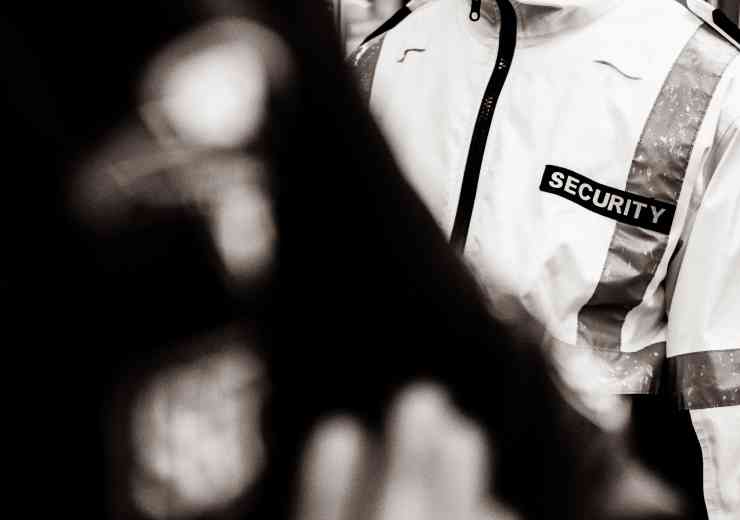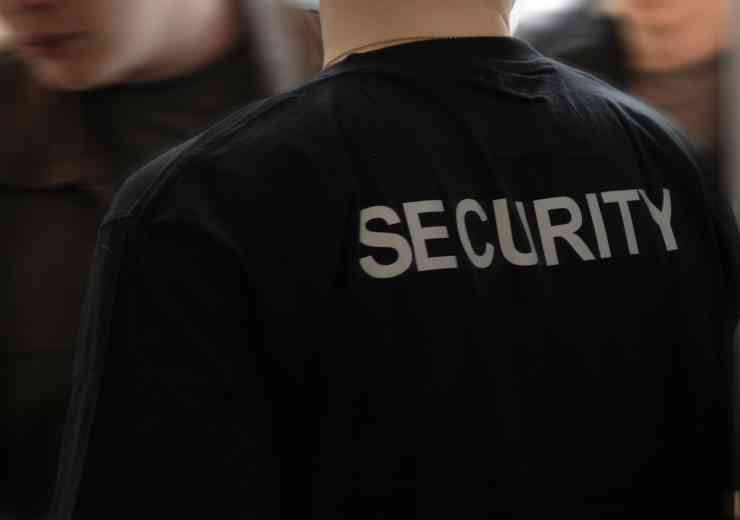
CTB Q&A: Evolv Technology
On 15 October, Evolv Technology sponsored our CTB365 Event Management Security event. As part of the event, Nathan Bailey, Sales Director, EMEA, and co-founder Anil Chitkara shared some thoughts on industry preparation for a return to live event venues. Here, we pose some further questions to Peter George, Evolv Technology CEO.
CTB: How can event organisers best use this time to ensure that security is at the standard required?
Forward-thinking venue security leaders had already put incident response plans and tabletop exercises in place prior to the world shutting down due to the pandemic – helping to keep patrons and employees safe by thwarting threats and bad actors targeting their venues. Such leaders can serve as mentors to their peers at other venues who are in the process of fortifying their security strategies by sharing best practices. Being part of, or forming, a consortium within their industry will also prove invaluable especially as the world reopens and new safety protocols are mandated and rolled out.
For those in charge of venue security, a must-have is a threat assessment and vulnerability analysis or a risk assessment that identifies security gaps, and includes a combination of people, processes and technology to address those shortcomings.
Implementing ongoing formal training for both security staff and employees will allow them to be more vigilant and aware of signs of danger. This is a key part of the overall security plan. Security leaders should also work with law enforcement and/or an outside firm to assist. Additionally, they should ramp up various sources of intelligence to help them understand and identify the threats to their venues and, if applicable, to the people performing at the venues. These sources stream in from various local and central government or fusion centers, through a range of companies providing intelligence-as-a-service, and through the venue’s own network of individual contacts.
Making changes to processes and technology is also critical. These may include fortifying the perimeter with bollards, installing CCTV cameras, and improving visitor security screening. The latter must now offer a touchless experience that allows for proper social distancing, thus security directors should look at advanced security technology for screening that won’t create long lines and invasive (now considered dangerous) screening methods. Implemented effectively, process and technology changes can multiply the available forces while enabling significant improvements to the effectiveness and efficiency of the overall security operation.
With more venues in various stages of re-opening, adhering and adjusting to local and central/federal government guidelines and regulations is an ongoing requirement. Depending on the country in which one’s venue is located, this will vary. In the UK, Martin’s Law, which is temporarily on hold due to the pandemic, will require venues to have increased physical security, training, incident response plans and exercises for staff on what to do during an attack.
CTB: How does Evolv bridge the gap between safety and visitor experience?
Evolv is dedicated to making the world a safer place to live, work, learn and play. The company is leading the digital transformation to touchless security screening—one that addresses the ‘new normal’ threat of viruses and pandemics as well as weapons. Unlike traditional metal detectors, Evolv Express™ is powered by a combination of artificial intelligence software and powerful sensors to identify threats in real-time without requiring visitors to stop and empty pockets or remove bags. It can tell the difference between everyday items (mobile phone, keys and coins) and weapons. The system precludes the need for intrusive pat downs and hand wanding of visitors and employees while keeping the venues and facilities safe from threats such as mass shootings and terrorist attacks. It also reduces health risks promoted by unnecessary human contact. People simply walk through naturally, alleviating long lines and bottlenecks at entrances while greatly reducing contact between visitors and security staff. The visitor experience is rapid, accurate, respectful and safe – all priorities in a post-Covid world.
Evolv Express can screen 3,600 people per hour for weapons. The system is 10 times faster than metal detectors, which use nearly century old technology and result in substantial physical contact. To date, Evolv’s systems have been used to screen more than 75 million individuals in an expedient, respectful manner and have prevented more than 5,000 weapons from entering a range of venues and places of work. Notably, Evolv is second only to the U.S. Department of Homeland Security’s agency, the Transportation Security Administration (TSA), in terms of numbers of people screened by its systems.
CTB: What role does technology have to play in helping people safely gather at a time when gathering itself is no longer considered safe?
Like never before, visitors and employees are, or will soon be, scrutinising how venues and workplaces are handling the new normal of the pandemic and weighing the risk versus rewards of entering. Visitors, patrons and employees will expect security screening processes to be very different than the days before the virus. Simply put, Covid-19 has changed the ‘risk profile’ of how people gather. Outdoor venues, workplaces, conferences, schools and essentially all other organisations must adopt a pandemic-aware security posture if they are to survive and, hopefully, thrive.
Technology has become even more of a critical component in helping people gather in a post-pandemic world. For example, Evolv recently introduced the Evolv Thermal Imaging Package for Evolv Express, an optional capability to allow screening of each visitor or employee for elevated skin temperature followed by touchless weapons screening. It’s the industry’s only integrated touchless health and weapons screening system. Enhancing concept of operation (conop) procedures, venue personnel can direct those with elevated readings to secondary screening. As a result, venues reduce the risk that their security staff, visitors and employees are exposed to individuals presenting signs of virus infection.
Security investment must deliver more capable security systems that allow for fluid detection and a better visitor experience. That can only be accomplished by capitalising on new technologies.
CTB: Contact, at least in the way we knew before, is no longer a viable option for venue screening. What should this new touchless visitor experience look like?
One thing that venues certainly understand post-pandemic is that there is no going back to using invasive, analog methods of security screening such as metal detectors, hand wands and pat downs. Metal detectors were not designed to handle modern facilities, crowds, manual bag inspections and other dynamics that result in bottlenecks.
The future of people screening must be touchless and digital in order to deal with the realities of today’s threats, while preparing for tomorrow’s threats. Venues are required to implement new regulations and mandated protocols that now include social distancing. Visitors and employees will demand a very orderly, safe screening process that allows people to walk through while maintaining adequate social distancing, with little to no close contact.
The touchless security screening experience is something that Evolv Express provided even before the pandemic took the world by surprise. For venues using the system, visitors and employees walk through at their natural pace without stopping, removing bags or backpacks, or emptying pockets of everyday items because the system spots weapons while ignoring harmless personal items. The touchless experience is welcoming, allowing families or groups of people to walk in together. It’s a respectful, uninterrupted security and threat screening that is accurate, fast and gets visitors to their seats and other destinations within the venue quickly.
If a potential threat is detected while a person is walking through the system, real-time image-aided alarms show security guards precisely where the potential threat is on that person or in his or her bag. This greatly reduces the amount of physical contact required between security staff and those being screened and their belongings, while allowing security staff to act quickly and efficiently.
Many venues during the re-opening phase have added thermal imaging for identifying guests with elevated body temperature as well as touchless security screening as part of their social-distancing procedures. We are seeing the beginning of a new trend of multi-threat screening that is fundamentally and permanently changing security for venues and guest experiences.
CTB: How can organisations digitally transform physical security?
Many of today’s physical security solutions have lagged in an age of digital transformation. In fact, most security screening technologies haven’t really changed much since the 1920s and are devoid of digital data. Metal detectors, hand wands and manual bag searches are outdated approaches, based on analog technologies that are getting left behind in a modern, post-pandemic world.
The lack of advanced technology in physical security has created even greater burden on security staff who face an ever-growing list of responsibilities—such as manually checking guests for prohibited items, monitoring for suspicious or bad behavior, helping guide guests, handling minor yet distracting incidents, maintaining a clean atmosphere in and around security checks, along with numerous other tasks. In the new normal, many security staff are responsible for conducting temperature checks, which puts their own health at risk.
Serving on the frontline, they’re also now more exposed to volatile societal situations given the stresses of the pandemic; with that volatility increasing due to extended job loss, lack of access to services for those dealing with mental illness, increased sales of guns and liquor and other dynamics.
The future is touchless and digital. It’s a post-pandemic re-imagining of security screening that leverages modern technologies like Evolv Express to deal with the realities of today’s threats such as health and safety concerns, while being able to quickly address the threats of tomorrow. Evolv is on the digital transformation journey and embracing a new vision and technology architecture that is emerging – the ‘Digital Threshold’.
This vision applies the proven patterns of digital transformation to everything that happens in the places where people gather as they enter and exit today’s modern venues and organisations. It’s within this vision that these venues can intelligently use data to create a touchless experience for patrons and employees to enhance the overall experience instead of detracting from it, as we often encounter today. Making security screening faster and more precise is part of the Digital Threshold vision.
Take a look into the future. Imagine if the entry experience integrated both digital health screening and health credentialing into the screening process? What if electronic ticketing, VIP identification, and ‘be on the lookout’ (BOLO) alerts could also be part of that seamless flow? What if the Digital Threshold generated useful analytics that facilitated data-driven decisions about system adjustments and the movement of people entering and moving about within the walls of a venue? All of these scenarios are part of Evolv’s Digital Threshold vision that not only addresses the current environment, but also creates the ability to adapt to manage future requirements when and where needed. The Digital Threshold vision holds vast promise. We’re in the initial stages of implementing that today.
digital issue




















